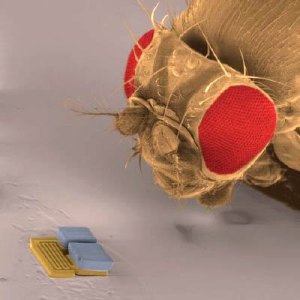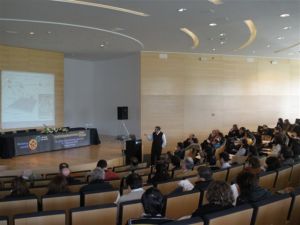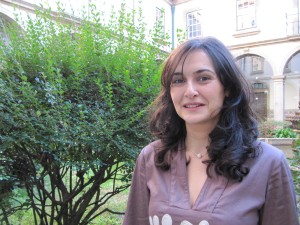Scientists create nanoenvironment to control stem cells
Within the emerging field of stem cells there is a need for an environment that can regulate cell activity, to slow down differentiation or proliferation, in vitro or in vivo while remaining invisible to the immune system. Researchers form the University of Hong Kong and the Massachusetts Institute of Technology faced that challenge and published the study “Forever Young: How to Control the Elongation, Differentiation, and Proliferation of Cells Using Nanotechnology” in the current issue of Cell Transplantation. The article is freely available here.
By creating a nanoenvironment surrounding PC12 cells, Schwann cells, and neural precursor cells (NPCs), the researchers were able to control the proliferation, elongation, differentiation, and maturation in vitro.
“The successful storage and implantation of stem cells poses significant challenges for tissue engineering in the nervous system, challenges in addition to those inherent to neural regeneration,” said Dr. Ellis-Behnke, corresponding author. “There is a need for creating an environment that can regulate cell activity by delaying cell proliferation, proliferation and maturation. Nanoscaffolds can play a central role in organ regeneration as they act as templates and guides for cell proliferation, differentiation and tissue growth. It is also important to protect these fragile cells from the harsh environment in which they are transplanted.”
According to Dr. Ellis-Behnke, advancements in nanotechnology offer a “new era” in tissue and organ reconstruction. Thus, finding the right nano-sized scaffold could be beneficial, so the research team developed a “self-assembling nanofiber scaffold” (SAPNS), a nanotechnology application to use for implanting young cells.
The researchers concluded that a combination of SAPNS and young cells can be implanted into the central nervous system (CNS), eliminating the need for immunosuppressants.
“Implanted stem cells are adversely susceptible to their new environment and quickly get old, but this study suggests a solution to conquer this problem,” said Prof. Shinn-Zong Lin, professor of Neurosurgery at China University Medical Hospital, Taiwan and Chairman of the Pan Pacific Symposium on Stem Cell Research where part of this work was first presented. “The self-assembling nanofiber scaffold (SAPNS) provides a niche for the encapsulated stem cells by slowing down their growth, differentiation and proliferation, as well as potentially minimizing the immune response, thus enhancing the survival rate of the implanted stem cells. This allows the implanted stem cells to “stay forever young” and extend their neurites to reach distant targets, thereby re-establishing the neural circuits
This combination of stem cells and SAPNS technologies gives a new hope for building up younger neural circuit in the central neural system.”
surce: Euekalert and Cell Transplantation
AZonano presents insight from the world’s leading players
The website AZoNano.com has started a series called “Nanotech Thought Leaders”. It is a selection of articles that cover the key technology areas where Nanotechnology is making an impact and where it will make an increasing impact. «All the articles are written by experts who have been invited as recognised leaders in their fields to provide a “state of the art” contribution».
Take some time to go through the articles, easy to understand and great presentation some with really great pictures, like on of the images illustrating the article «Nanorobots and Microrobots – Potential Applications are Exciting, Many Challenges Remain to be Addressed», by professor Brad Nelson form the Institute of Robotics and Intelligent Systems, ETH Zürich. The image shows a fruit fly next to a microrobot
Leading-edge research at the American University in Cairo
 New diagnostic tests for sensitive detection of the hepatitis C virus; detection of cancer biomarkers, as well as creating a new generation of nano-devices that include smart bricks with tiny sensors, which can analyze building safety and warn of fires and earthquakes, are only some of the cutting-edge nanotechnology research projects developed at the American University in Cairo (AUC).
New diagnostic tests for sensitive detection of the hepatitis C virus; detection of cancer biomarkers, as well as creating a new generation of nano-devices that include smart bricks with tiny sensors, which can analyze building safety and warn of fires and earthquakes, are only some of the cutting-edge nanotechnology research projects developed at the American University in Cairo (AUC).
AUC professors are constructing miniaturized devices. These devices are commonly referred to as microelectromechanical (MEMS) and nanoelectromechanical (NEMS) systems, which are used in a broad range of applications, including communication systems, blood pressure regulation devises, muscle stimulators, and high-density storage media. “The field is only 15 years old, but nearly every system you can think of has some MEMS component in it, from pharmaceuticals and mobile phones to the wing of an airplane and the fabric of stain-resistant shirts,” said Sherif Sedky from the Yousef Jameel Science and Technology Research Center.
Sedky and the microfabrication group that he heads have recently secured a patent jointly owned with the Interuniversity Microelectronics Center in Belgium for their development of new techniques that control the physical properties of thin films.
If you want to know more about the activity developed at AUC, click here.
Good chances for nano-based energy storage products
Markets for nano-based energy storage products are expected to take off from 2012. Robust sales growth opportunities are expected for nanotechnology based rechargeable batteries (Lithium-ion) and ultracapacitors as these energy storage products are expected to be the early adopters of nanomaterials in their production.
The global nanotechnology enhanced energy storage products market is in the pre-market stage and will gain critical mass when the usage of nano-based materials in the production of energy storage products is expected to become mainstream post-2012. The R&D pipeline for nano storage products is replete with promising nano-prototypes and mockups, some of which are tested in pilot markets. Commercialized nano storage products are expected to be launched in large numbers post-2012.
These are only some of the conclusions included in the report “Global Nanotechnology Markets for Energy Storage – Analysis and Forecasts to 2015”. You can read a little more about the report here.
The report announced by Research and Markets (a source for international market research and market data) provides key data, information and analysis on the market opportunities in the nanotechnology enabled energy storage market. The report provides key market trends and competitive landscape analysis for the market. The research discusses market dynamics in detail by providing analytical content on the key challenges for the commercialization of nanotechnology. The report’s coverage of the nanotechnology enabled energy storage market is comprehensive with dedicated sections on the state of research, patent analysis, and key supplier profiles.
Key topics covered include nanotechnology enabled batteries, the ultracapacitor market potential, the state of research, and patent activities analysis.
Workshop Nano09 closed today in Braga
Today the ‘Workshop Nano09-Shaping the Future’, a joint initiative of the Lisbon Academy of Sciences and the Portuguese Academy of Engineering, closed in Braga. Yesterday the Portuguese minister of Science and Technology, Mariano Gago, participated in a session attended by over a hundred nanotechnology researchers gathered in Braga, to discuss the main tendencies in Nanotechnology and Nanoscience. The participants, mainly Portuguese and Spanish members of research groups, had the opportunity to exchange experiences with other colleagues form leading international research institutions. The workshop was the first event ever hosted by INL.
Over 100 researchers gathered in Braga
The International Iberian Nanotechnology Laboratory (INL) is hosting the «Workshop Nano09 – Shaping the future». The first scientific event ever to take place in the INL facilities in Braga (Portugal), started this morning (December 10th) and will continue until tomorrow afternoon.
For the more than hundred nano-scientist who are present in Braga these days, the workshop is an opportunity to discuss the future of Nanosciences and Nanotechnology as well as a chance to visit the INL facilities.
The workshop started with a presentation by Martin Steinhart (Institut für Chemie, Universität Osnabrück) «Beyond Evolution: Polymers in Holes and Holes in Polymers», in memoriam of Ulrich Gösele, from Max Planck-Institute of Microstructure Physics, who unexpectedly passed away last month.
The image shows the deputy director-general of INL, prof. Paulo Freitas (INESC Microsystems and Nanotechnology , and Physics Department, Instituto Superior Técnico, Lisbon) making his presentation «Lab on chip platforms for biological and biomedial applications.»
Here you can find out a little more about the event and the participants.



